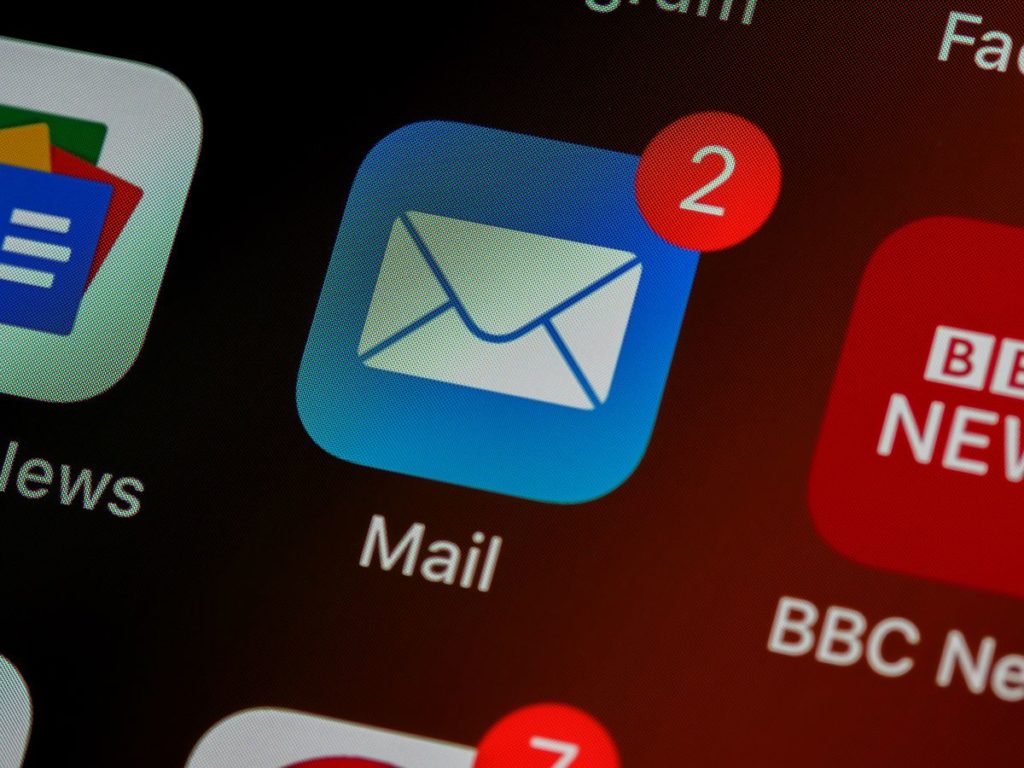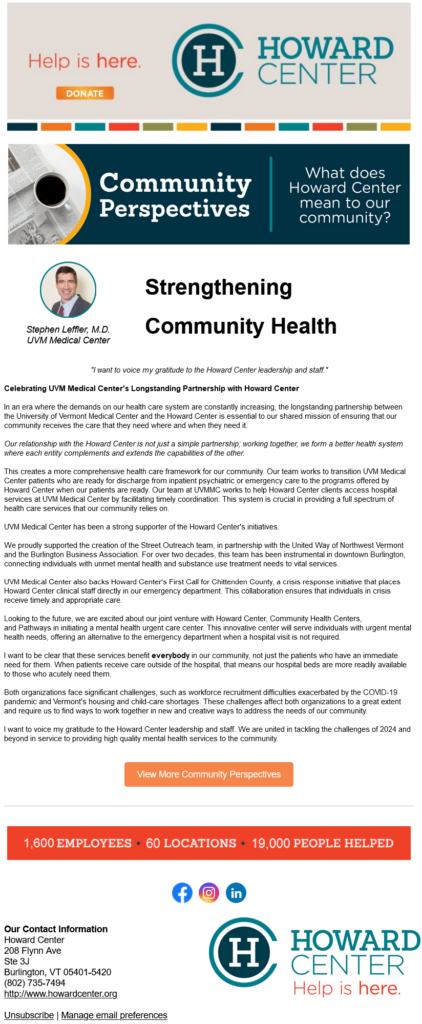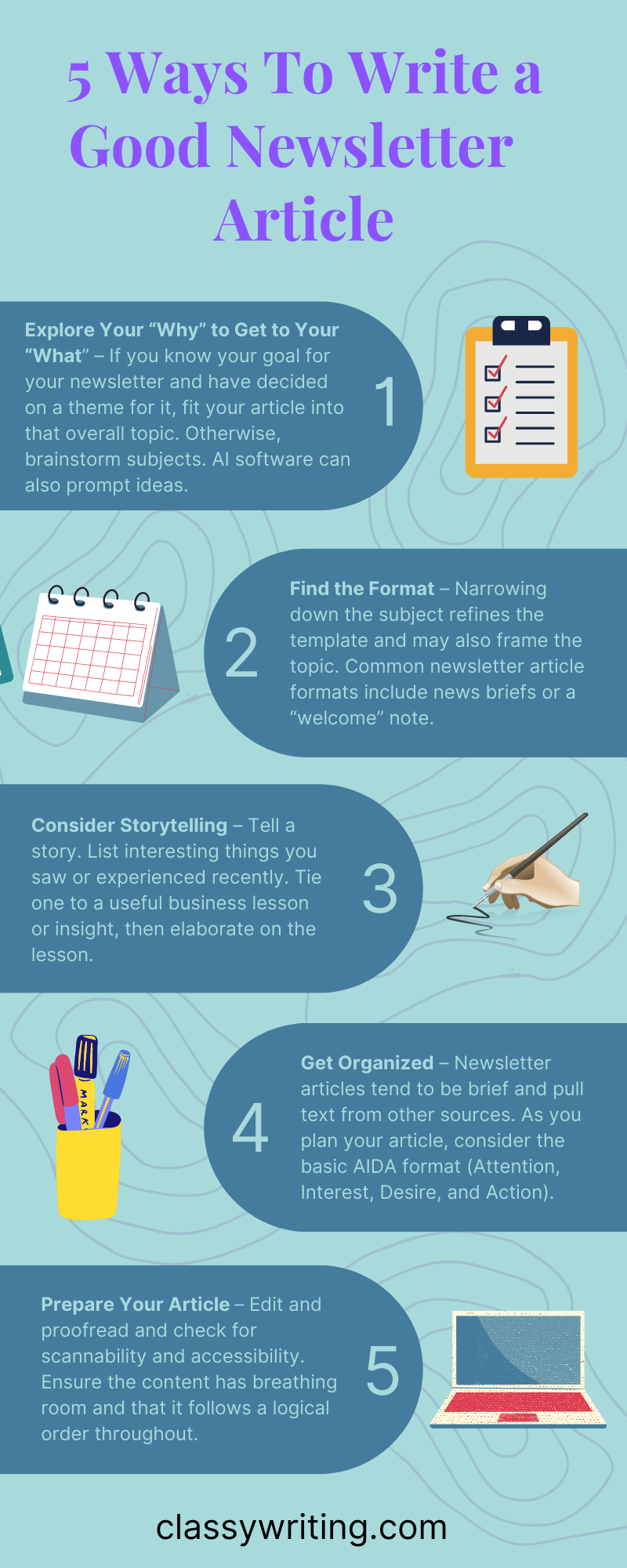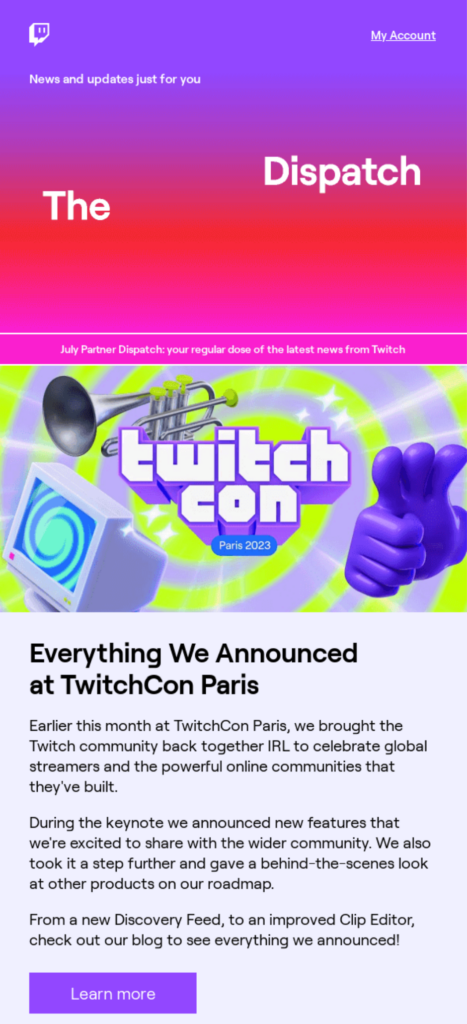5 Steps to Write a Good Newsletter Article for Business

1. Explore Your “Why” to Get to Your “What” – Businesses usually send newsletters to get more leads. How do you write a good newsletter article? If you know why you’re sending a newsletter and have already decided on a theme for it, fit your article into that overall topic. Otherwise, brainstorm subjects based on any existing customer data or what’s trending.
To refine your topic, link your article goals to the different stages of the buyer’s journey: Awareness, Consideration, and Decision-Making. Artificial intelligence software can prompt ideas that align with your customer data and your goals, too.
2. Finding the Format: Another Way to Generate an Engaging Topic – Narrowing down the subject refines the article template. The format may also frame the topic. Common newsletter articles include:
- A news brief
- An editor’s or “welcome” note
- A teaser for a blog post
3. Consider Storytelling – Your article should be useful, or in marketing terms, offer value. To help readers identify with you, tell a story. Michael Katz, who teaches professionals how to understand marketing, details his storytelling method effectively. To find good stories, list interesting things you saw or experienced recently, such as a colorful rainbow or a fun trip. Think about experiences you’ve shared.
Tie one to a useful business lesson or insight connected to your expertise. Then describe the experience, elaborating on the lesson.
Example: HORNE newsletter: Uphill Goals and Downhill Habits
4. Get Organized – Newsletter articles tend to be brief and pull text from other sources, like blogs or landing pages. Research, is easier before you draft an outline. As you plan the beginning, middle, and end, outside of listicles, consider the basic AIDA format (Attention, Interest, Desire, and Action). When you write, follow the guidelines outlined in the AMA Handbook of Business Writing, which include using a title that attracts curiosity and short, focused paragraphs.
5. Prepare Your Article – To apply the finishing touches, edit and proofread and check for scannability and accessibility. Ensure the content has breathing room and that it follows a logical order throughout.
This is a shorter version of How to Write a Newsletter Article, which covers the process more in-depth and features advice about using artificial intelligence and interesting quotes.
How do you write a good newsletter article? Feel free to comment below.
Quotes
“You can’t go wrong by providing value to your readers. If you know your readers well and you have expertise that can help them solve some of their common problems, email newsletters are a great place to share that expertise. But make sure to provide content that is truly unique and informative. You want to make sure you’re offering value and not adding to the clutter.” ~ Kathy Bryan, Electives
“A personal story is effective because you can tie it into writing a newsletter article effortlessly.” ~ Carmine Mastropierro, How to Write a Newsletter: Step-by-Step Guide
Comments? Suggestions? Need help with your communications? Contact me.





